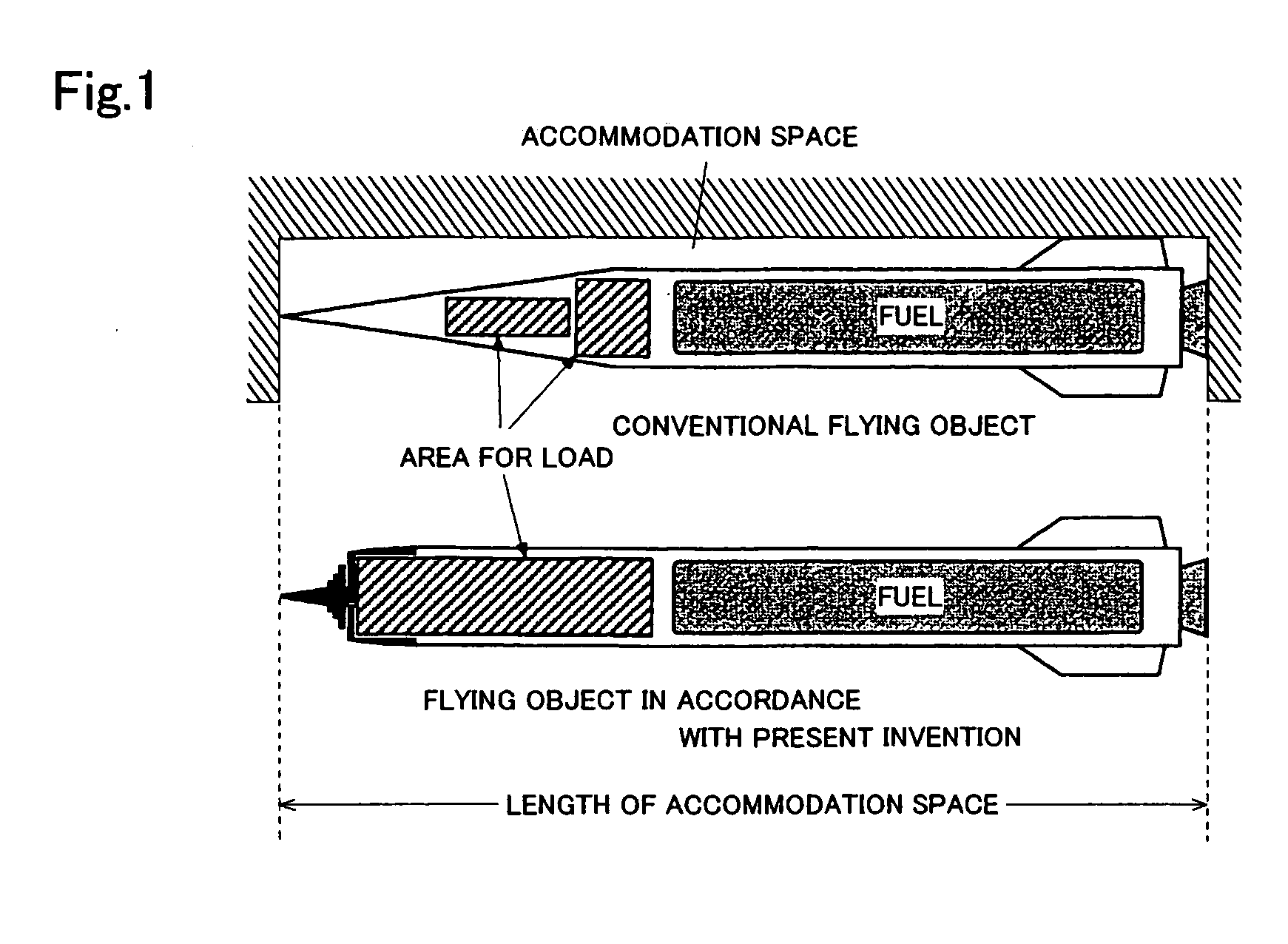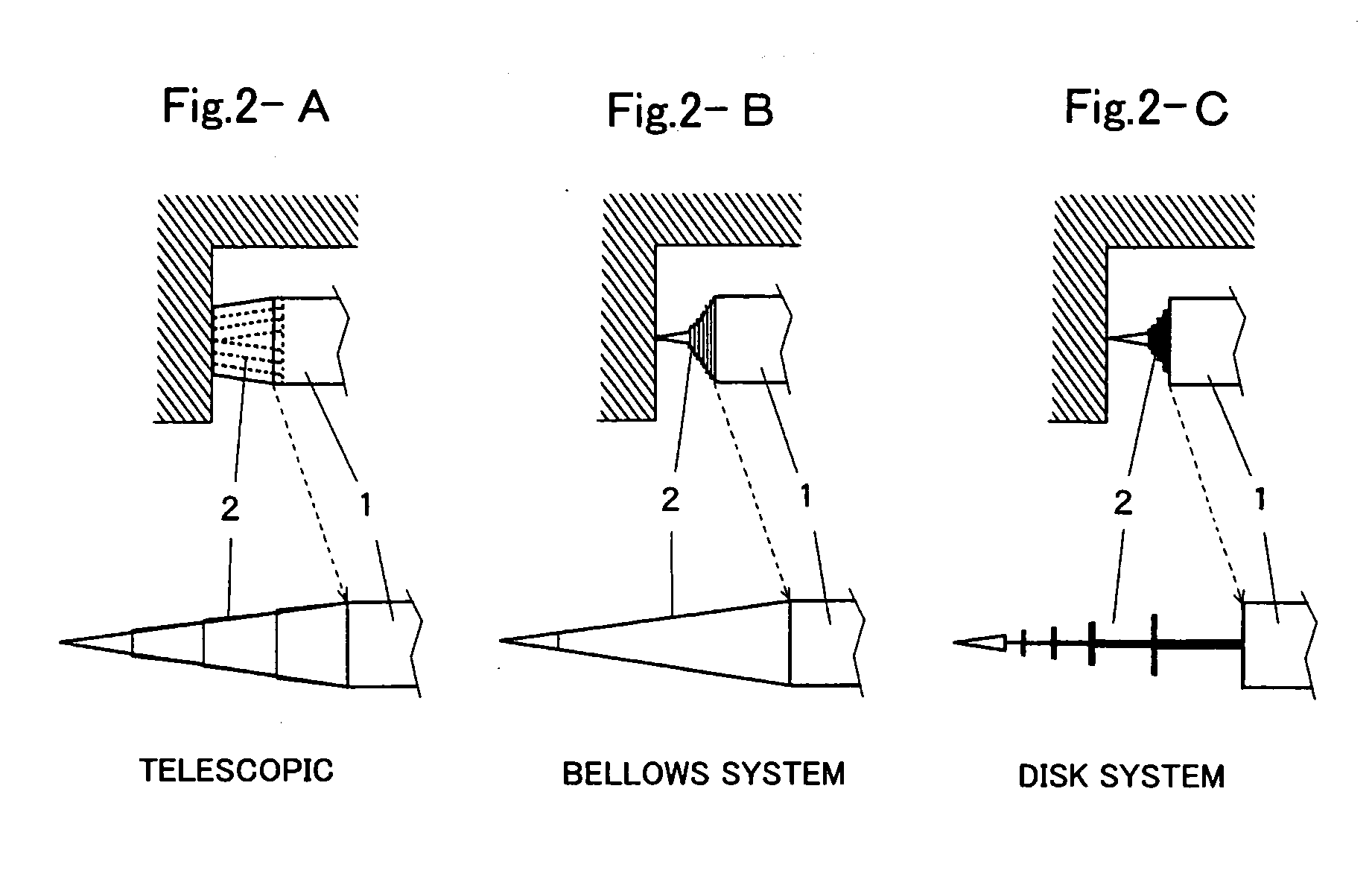Method for reducing resistance of flying object using expandable nose cone
a technology of expanding cone and flying object, which is applied in the direction of fuselage, weapons, projectiles, etc., can solve the problems of reducing the resistance of flying objects, reducing the volume efficiency of flying objects, and reducing the air resistance, so as to reduce the air resistance even more significantly, increase the volume efficiency, and reduce the resistance
- Summary
- Abstract
- Description
- Claims
- Application Information
AI Technical Summary
Benefits of technology
Problems solved by technology
Method used
Image
Examples
embodiment 1
[0029] One embodiment of the disk system will be described based on the above-described data with reference to FIG. 7. In this embodiment, an expandable nose cone was constructed by using three disks and a tip cone. FIG. 7A shows an accommodation state of a flying object 1, wherein part of a nose cone 2 is in a compressed state inside an accommodation space 10. FIG. 7B shows a state in which the flying object was separated from the accommodation portion and the nose cone 2 has expanded and started flying. Further, FIG. 7C is an enlarged view of the expanded nose cone portion. The three disks 2b and tip cone member 2a, which constitute the nose cone 2, are fixed to the tips of respective shafts 2c, the shafts 2c are so formed that the diameter thereof decreases toward the tip side, and the shafts 2c are in the form of the so-called telescopic pole in which each next member is accommodated inside the previous one. The nose cone 2 in which the tip cone member 2a and the disks 2b are in...
PUM
 Login to View More
Login to View More Abstract
Description
Claims
Application Information
 Login to View More
Login to View More - R&D
- Intellectual Property
- Life Sciences
- Materials
- Tech Scout
- Unparalleled Data Quality
- Higher Quality Content
- 60% Fewer Hallucinations
Browse by: Latest US Patents, China's latest patents, Technical Efficacy Thesaurus, Application Domain, Technology Topic, Popular Technical Reports.
© 2025 PatSnap. All rights reserved.Legal|Privacy policy|Modern Slavery Act Transparency Statement|Sitemap|About US| Contact US: help@patsnap.com



